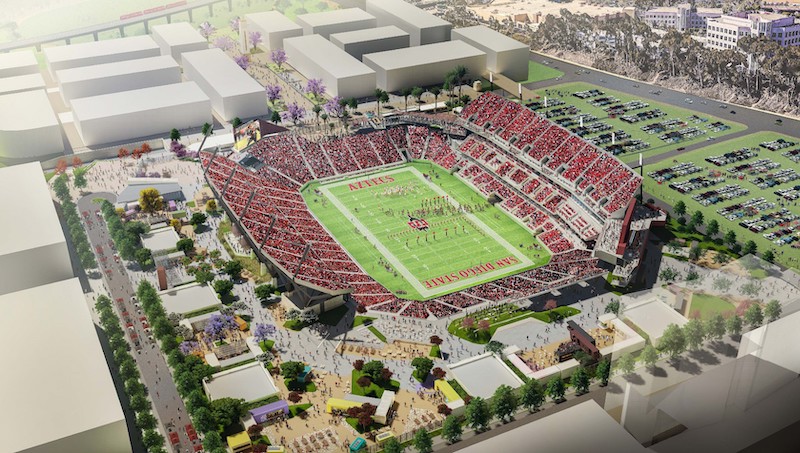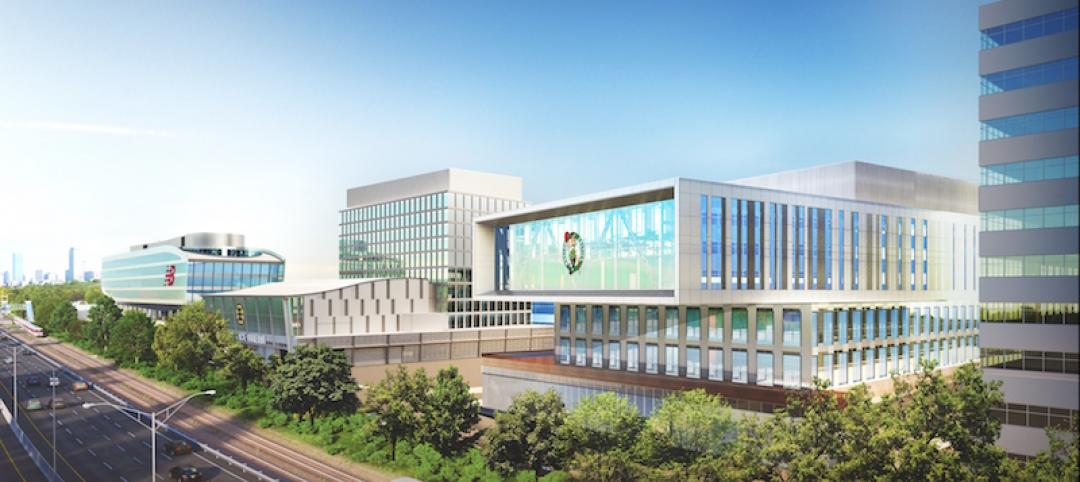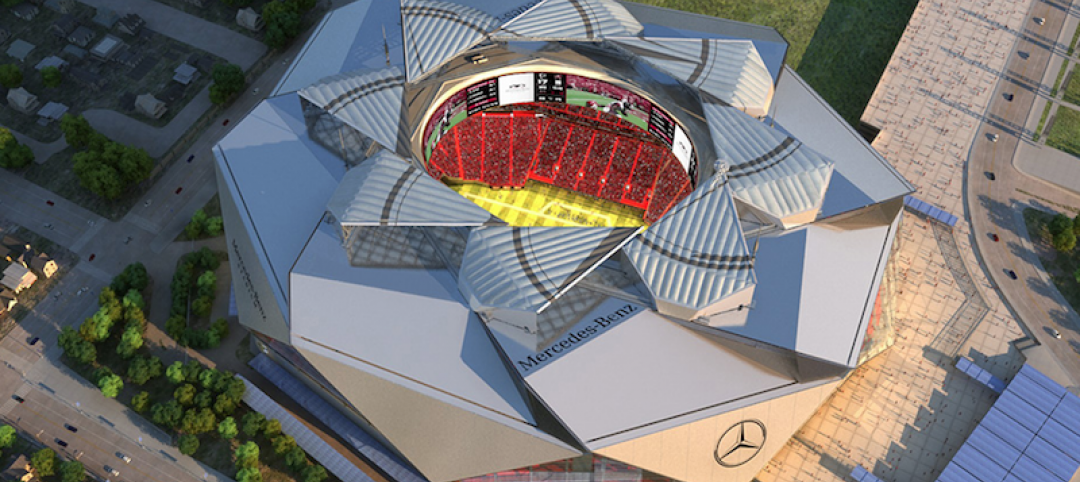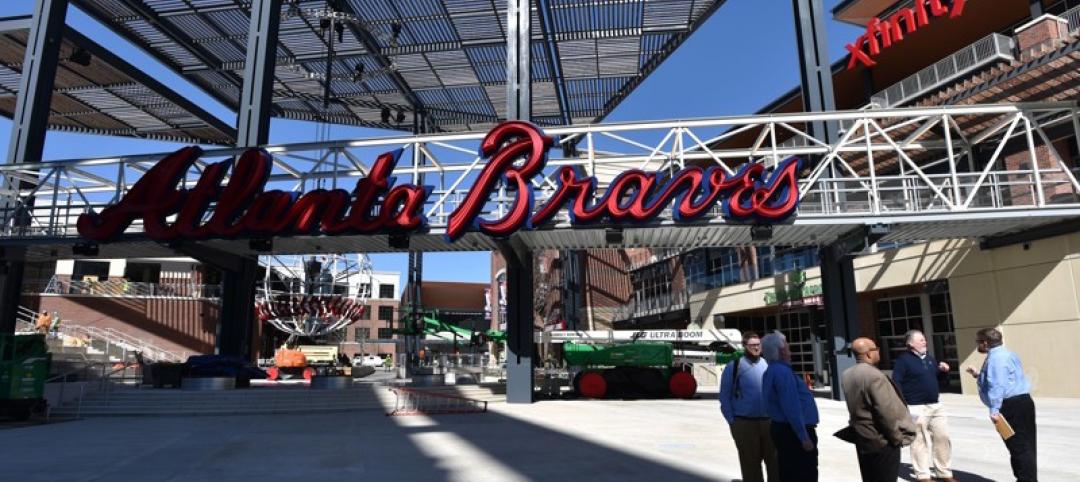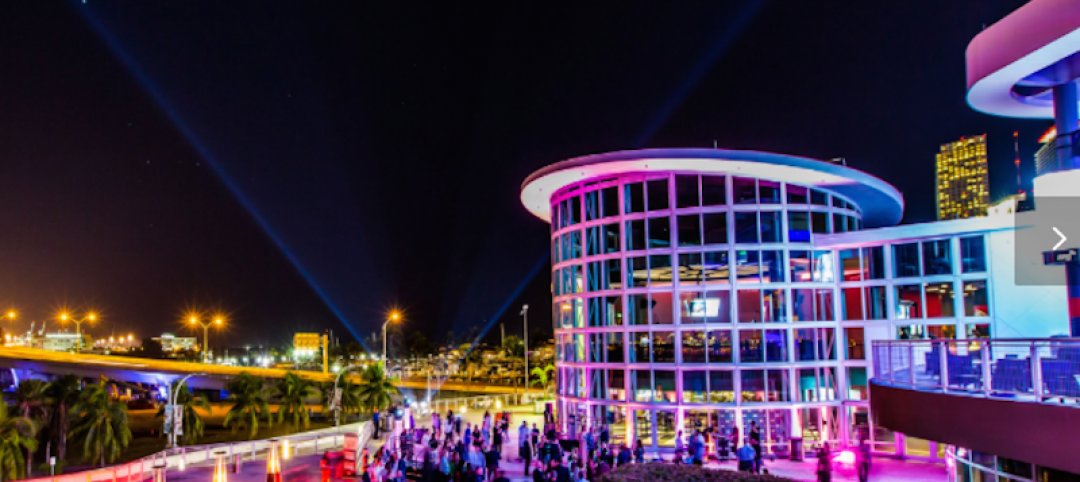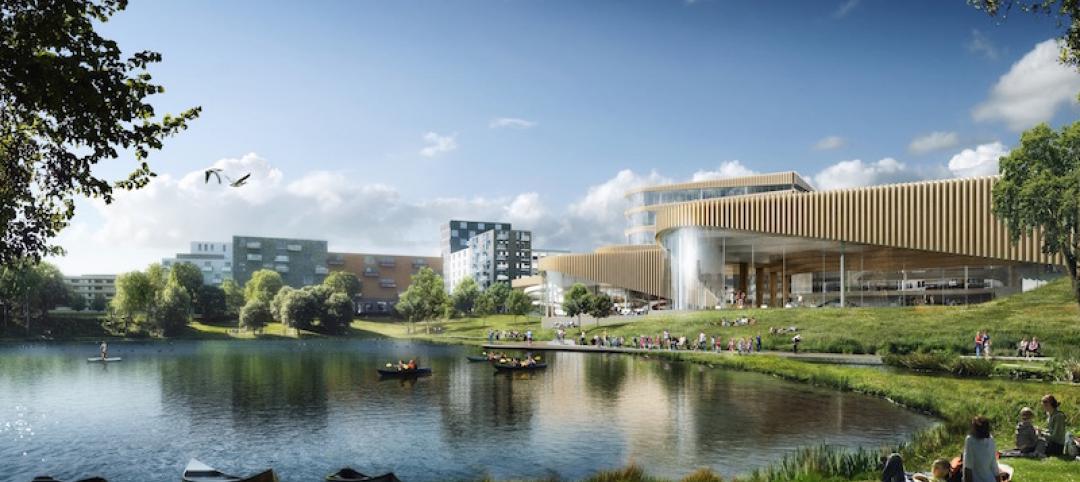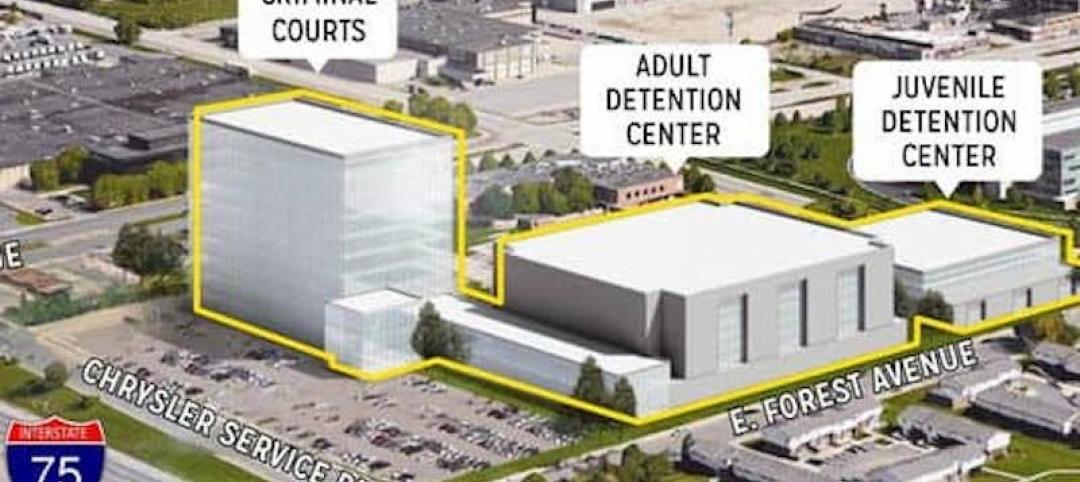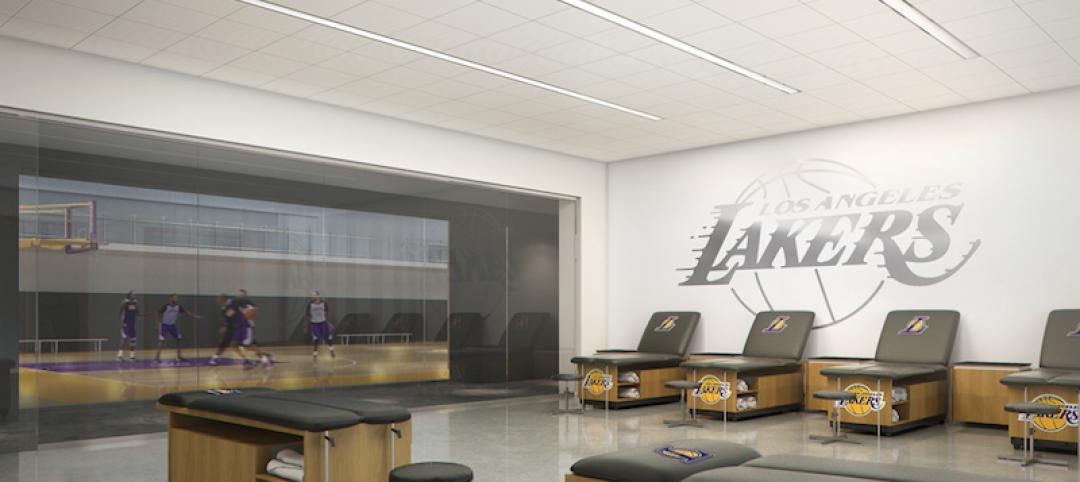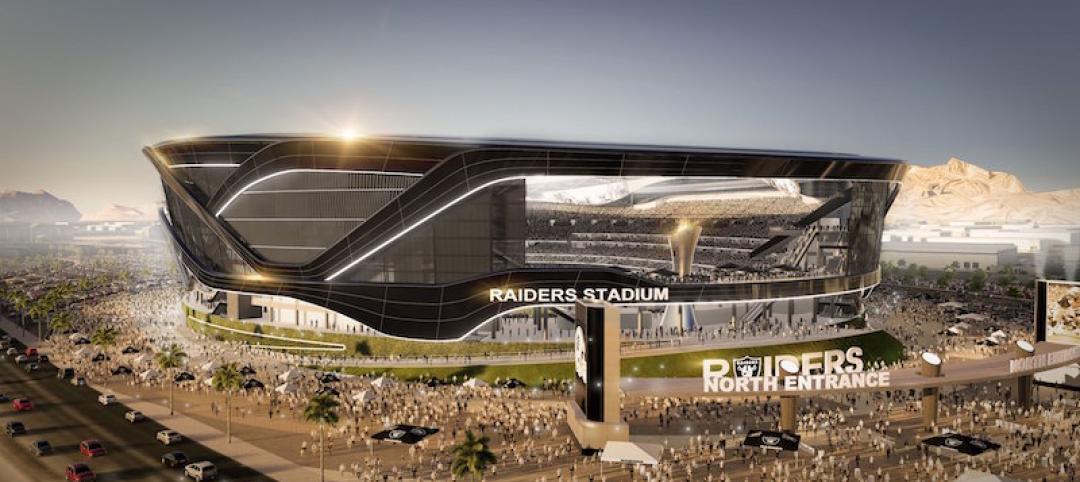This week, a building team that includes Clark Construction Group topped out the 35,000-seat-capacity Aztec Stadium at San Diego State University.
The structural steel operations for the $310 million stadium were completed 11 months after construction commenced. Once the stadium opens in September 2022, it is expected to host more than 300 events annually, including collegiate and professional football and soccer games, concerts, and cultural events.
The facility, which project architect Gensler Sports designed to meet LEED Gold certification, is the first phase of SDSU Mission Valley, a mixed-used, medium-density campus innovation district that will include transit, 95,000 sf of retail, 4,000 residences and 400 hotel rooms, and more than 80 acres of parks and recreation space. This district is projected to have a $3.1 billion economic impact on San Diego, create 17,000 jobs, and increase the university’s enrollment by 15,000.
What had been Qualcomm Stadium was demolished—after the San Diego Chargers football team relocated to Los Angeles—to make way for SDSU Mission Valley. In June 2020, the university agreed to pay the city $88 million to acquire 135 acres of Mission Valley for this district.
CREATED 6,500 CONSTRUCTION JOBS
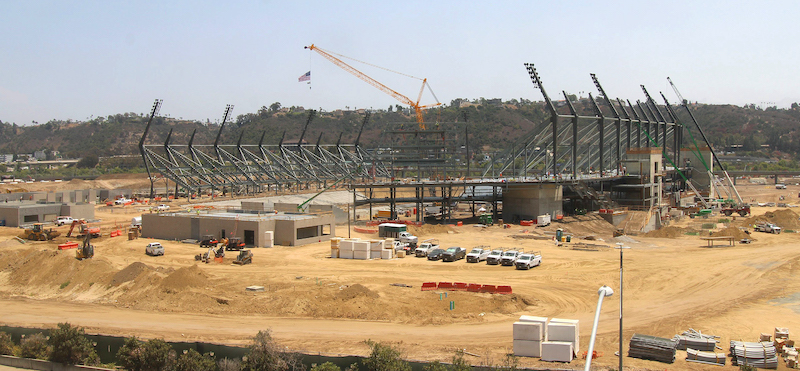
The Aztec Stadium is supported by 2,500 steel beams. Image: Clark Construction Group.
Some 30,000 cubic yards of concrete were poured for Aztec Stadium, which is supported by 2,500 steel beams. On average, 300 craft workers representing 15 different trade partners were on-site daily. The construction of the stadium provided nearly 6,500 construction jobs in total. In aggregate, local firms—including 35 San Diego-based businesses—were awarded $250 million in construction contracts.
Signature design elements that create connectivity to the field include the venue’s concourse level “neighborhoods,” designed to reflect the city’s diverse communities, and unique standing-room-only “piers” that jut out over stadium seating and conjure a coastal vibe.
Related Stories
Sports and Recreational Facilities | Apr 21, 2017
Boston Celtics training and practice facility will be part of Boston Landing mixed-use development
The facility will also include two floors of Class A laboratory and office space and retail space.
Sports and Recreational Facilities | Apr 19, 2017
Mercedes-Benz Stadium delayed until late August
The stadium is now scheduled to open on Aug. 26 in a preseason game between the Falcons and the Jaguars.
Concrete | Apr 7, 2017
‘Cool’ pavement creates ice rink aesthetic outside NHL practice facility
The concrete contains unique colors, aggregates, and textures.
Sports and Recreational Facilities | Apr 5, 2017
Informed design: A dynamic approach to athletic facilities design
With the completion of the athletic facility upgrade—dubbed the Arden Project—students will have access to state-of-the-art facilities.
Sports and Recreational Facilities | Mar 9, 2017
The construction of the Atlanta Braves’ new stadium, in 1 minute
OxBlue’s time-lapse video draws from more than 200,000 images.
Sports and Recreational Facilities | Feb 27, 2017
Miami’s AmericanAirlines Arena debuts a multipurpose event space
601 offers variety and flexibility not found in the arena’s other food and entertainment locations.
Sports and Recreational Facilities | Feb 22, 2017
3XN Architects wins competition to design Swedish aquatic center
The Danish firm beat entries from Zaha Hadid Architects and Henning Larsen Architects for the project.
Sports and Recreational Facilities | Feb 8, 2017
Dan Gilbert’s Rock Ventures proposes a land-for-jailhouse construction exchange
He would take over a downtown Detroit site, where he wants to build a soccer stadium, and build a new jail and courthouse about 1.5 miles away.
Sports and Recreational Facilities | Jan 26, 2017
How human performance facilities are changing the game
Human performance facilities are emerging as a new way for people to attend to their overall wellness.
Sports and Recreational Facilities | Jan 11, 2017
The Oakland Raiders could build this $1.9 billion stadium if they move to Vegas
The proposal was designed by MANICA Architecture and would seat 65,000 fans with room to expand to 72,000 for the Super Bowl.


